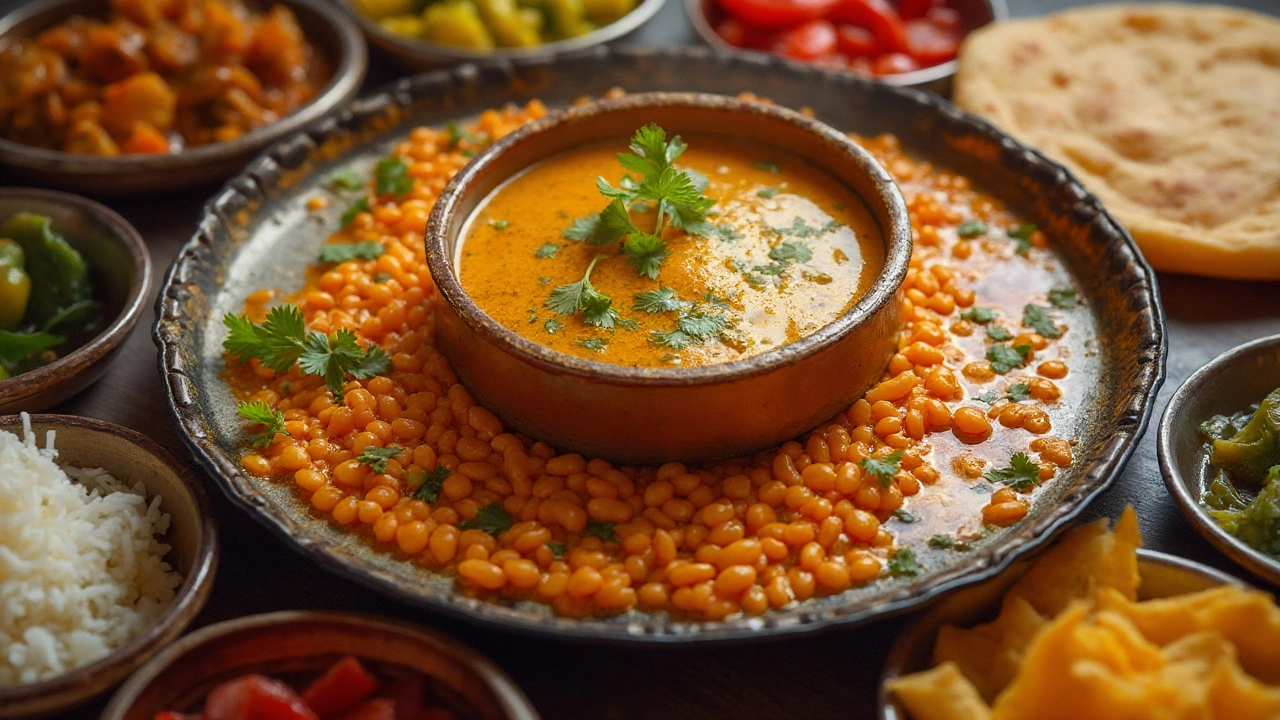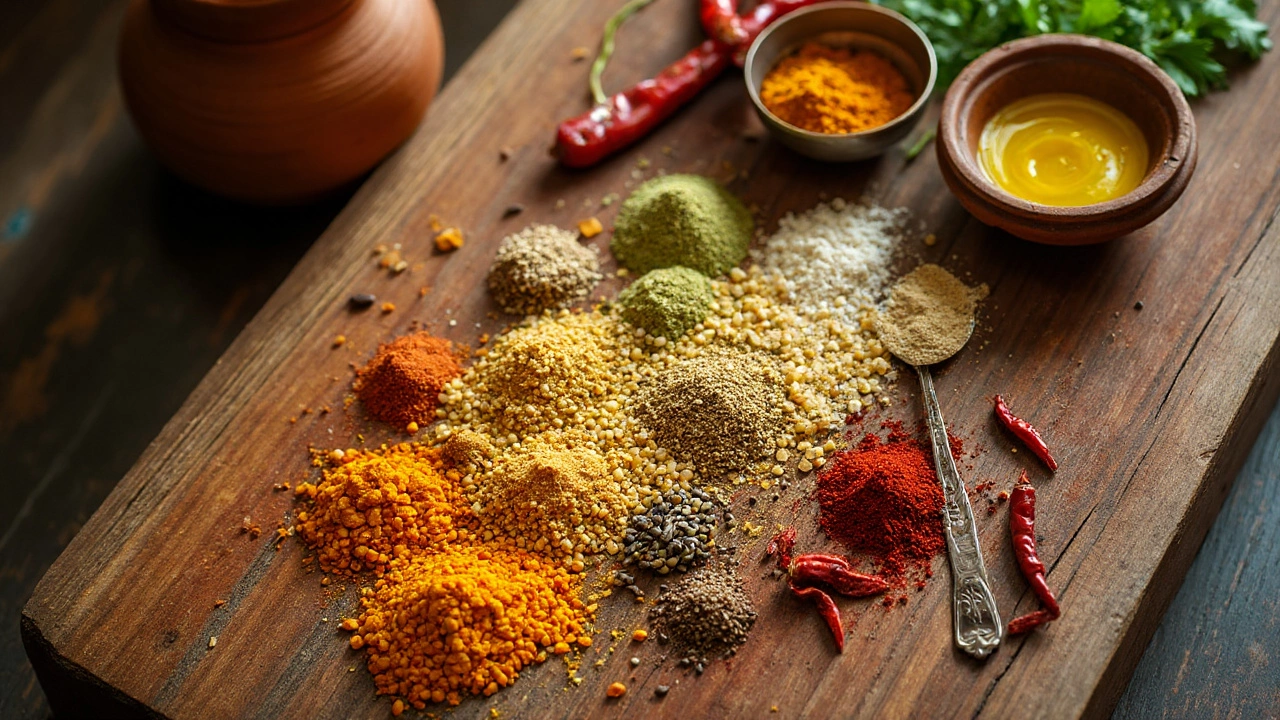Think you know dal? It’s more than just yellow mush poured over rice. A good bowl of dal has the power to reinvent what you think about comfort food. The magic lies in the details—the kind you taste before you even spot them on your spoon. Dal isn’t just a dish, it’s a love letter in one-pot form. And the cool part? The basics travel from humble village homes to posh city restaurants without missing a beat. So whether you’re here because your friend made killer dal last week and you want her secret, or because you’re new to Indian food and staring blankly at bags of lentils, let’s see what actually goes into this famous dish.
Building Blocks: Lentils and Legumes
You can’t make dal without dal, which is just the Hindi word for lentils and split pulses. It’s a bit confusing because in India, “dal” means both the ingredient (lentils, split peas, etc.) and the final dish (the soupy curry you eat with rice or roti). Walk into any Indian market and you’ll see heaps of lentils—some bright orange, some earthy brown, some tiny and black. Each has its own personality and flavor. But they all have one thing in common—they form the backbone of Indian comfort food.
Here’s where things get real. The most used lentils for dal are toor dal (split pigeon peas), moong dal (split yellow mung beans), masoor dal (red lentils), chana dal (split chickpeas), and urad dal (split black gram). Each one cooks at a different speed. For quick-cooking dal that melts into buttery luxury, masoor dal is your friend. Toor dal has a subtle, creamy flavor and a little more bite. Chana dal needs patience, but rewards you with nutty, hearty mouthfuls perfect for a chunky dal or even a dal fry. Urad dal is the base of the famous dal makhani—luxurious, creamy, and rich after hours of slow cooking. Moong dal? Super light, easy for sensitive stomachs, almost no fuss.
Want to jazz things up? Use a mix. Many family recipes throw together a bit of this and a bit of that—not for show, but because granny swears ‘mixed dal’ is tastier. Don't think of lentils as boring. They soak up flavors like a sponge and work well with all sorts of add-ins. The basic step—rinse them well (usually till the water runs clearer), then simmer with enough water to let them swell and break down. Some folks like a thicker dal, while others aim for a soupy consistency that gently hugs every grain of rice. The water ratio changes everything.
One surprising fact: Lentils are not just carbs. They pack a punch of protein, which is one reason dal is the star of vegetarian dinners across India. In fact, a cup of cooked toor dal delivers about 14g of protein—no protein shakes involved. They also give you iron, folate, and loads of fiber. That’s why dal isn’t just a comfort food—it’s a proper meal.
There are even specialty dals in different regions. Bengal is crazy about moong and chana dal, often with coconut, while Punjab’s rich dal makhani is unthinkable without urad dal and a bit of cream. Down south, toor dal shows up daily in sambar—a tangy tamarind-infused soup. In Rajasthan, the famous panchmel dal uses five types of lentils at once. There’s room to experiment here—don’t get locked into just one kind of dal when you can play with blends.

Spices and Aromatics: The Heart of Dal’s Flavor
Dal without spices tastes oddly flat. The ingredient list may look long, but you can break it down into two sets—spices added early (while lentils simmer) and the iconic ‘tadka’ or tempering poured on top just before serving. This step is where the magic sneaks in. Fresh spices wake up the whole dish, filling your kitchen with a scent you’ll ache for later.
What spices? The usual suspects are turmeric, red chili powder, cumin, coriander, and mustard seeds. Turmeric gives a sunny color and earthiness. Red chili powder’s there for heat—use more or less depending on your mood. Cumin and coriander are the twin pillars of savory aroma, while mustard seeds pop and add a gentle peppery kick. Hing (asafoetida) is another classic—though you only need a pinch, it lends a subtle umami funk. South Indian dals almost always have curry leaves added, while northerners lean on kasuri methi (dried fenugreek leaves) for the finishing touch.
Now, about the aromatics. Fresh ginger and garlic are non-negotiable. You want them finely chopped or ground into a paste, then sautéed till fragrant. Onion is another big player—red onions are the default in India. Some dal recipes add tomatoes for tang and body. Tomatoes also help cut through the earthiness of the lentils, making things brighter.
Let’s not forget the crowning moment—the tadka. This is when you heat oil or ghee (clarified butter), toss in whole spices like cumin, mustard seeds, dried chilies, and maybe a pinch of hing, and let them sizzle till fragrant. Sometimes you add garlic and let it crisp up too. Then, right before serving, that sizzling tadka gets poured over your bowl of dal. It sounds dramatic because it is—dal goes from bland to wow in seconds. Try using ghee for the tadka if you want restaurant-level flavor. It’s not just tradition; the butterfat soaks up and carries the spices across every spoonful.
If you want a slightly different vibe, throw in a few extra spices—cloves, cinnamon, bay leaves, and cardamom can push your dal into a more luxurious, party-ready zone. But if you’re more into everyday dal, keep it basic. Yes, the spices matter, but it’s not about burning your tongue off or drowning out the lentils. The secret is balance.
Here’s a pro tip: Always add salt after your lentils are mostly cooked. Adding it too soon can make lentils tough. And if you love brighter flavors, squeeze in some fresh lemon juice or sprinkle chopped cilantro just before serving.

Little Extras: The Surprising Ingredients and Tips for Next-Level Dal
Most dal recipes don’t stop with lentils, spices, and a good tadka. There are little extras—sometimes humble, sometimes slyly luxurious—that lift your dal from everyday soup to legendary status. Ever tasted dal and felt a mysterious depth you couldn’t quite put your finger on? That’s probably one of these little add-ins doing its thing.
For creamy body, lots of Indian cooks add a scoop of yogurt or even a splash of coconut milk (especially in southern India). It turns dal velvet-smooth and adds mild tang. Some family recipes swear by a spoon of ghee stirred in right before serving. Even a dot of butter for richness is a common trick in Punjabi kitchens.
Lemon or lime juice is huge. Honestly, it doesn’t just brighten flavor—it wakes up everything else in the bowl. For a sweet, mellow touch try adding a pinch of jaggery or brown sugar (typical in Gujarati dal). This tiny bit of sweetness brings out the earthiness of the lentils without making your dal taste like dessert. A few crushed kasuri methi leaves at the end can take the aroma off the charts.
For texture and surprises, toss in chopped spinach or fresh methi leaves—great for sneaking in greens without forcing a salad. Winter recipes sometimes add diced pumpkin or bottle gourd, which melts right in and turns dal even creamier without cream. You can even stir-fry leftover vegetables and add them to dal for a chunky, stew-thick dinner that feels new every night.
If you eat eggs, try dropping a poached egg or two into steaming dal. It sounds odd, but in some regions, it’s a common protein boost. If you’re after something heartier, a handful of cooked rice or khichdi stirred into dal can make a single bowl a complete meal.
Curious about the best dal for your health? Red lentils (masoor dal) cook super fast and are easy on digestion, so they’re great for beginners and people with sensitive bellies. Urad dal has more calcium and iron—good for anemia fighters. Toor dal—lovingly called arhar dal—is loaded with protein and pairs well with just about any flavor you throw at it.
Here’s a something that might surprise you: homemade dal freezes incredibly well. Make a big batch and freeze portions—just leave out the tadka and fresh cilantro until you reheat. Want to keep that nutty flavor and texture? Try to use a fresh batch of spices every time and grind them if possible—pre-ground powder can taste flat over time. And here’s a trick for crazy-busy days: soak your lentils for 30 minutes before cooking. This cuts cooking time in half and keeps the lentils soft and ready for flavor.
You might hear debates about oil versus ghee in tadka. Ghee is pure richness and carries spices beautifully, but a nice neutral oil works too—sunflower, peanut, even coconut oil if you want that southern touch. Don’t use olive oil; it tastes weird and fights with your spices.
If you’re feeling bold, toss in a crushed garlic clove into the finished dal and let it steep—like a tea bag—for a deeper aroma. And oh, always taste your dal just before serving. Lentils can soak up salt fast, so what tasted right ten minutes ago may need a quick extra sprinkle at the end. If you want serious aroma, finish your dal with a hot, sizzling tadka poured right in front of your guests—the sizzle is addictive, and so is the result.
Remember, every family, city, and state in India has a secret ingredient or a ritual for their dal. Don’t be afraid to experiment *and* mess up a little—dal is forgiving, flexible, and, most of all, meant to be enjoyed just the way you like it. With the right ingredients and just a little bit of care, you’ll end up with a bowl of dal that’s not just filling, but heartwarming too.
